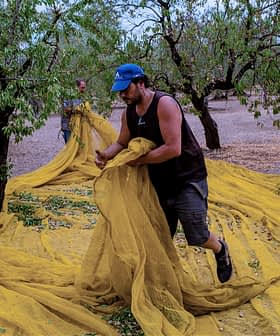New Research Reveals Key Role of Olive Oil in Ancient Roman Diets
Using new investigative techniques, researchers from the University of Kent determined that olive oil constituted 20 percent of caloric intake among residents of one Roman city.
An essential ingredient and an unmatched tool to preserve foodstuff, olives and olive oil played a central role in the days of ancient Herculaneum in what is today Naples.
Now, research has confirmed that average olive oil consumption for each inhabitant could reach up to 20 liters per year.
If compared to meat, fish and cereals, olive oil comprised almost one-fourth of overall food consumption.
“It was the main source of fat for them and it was widely used to store seasonal food to eat at a later date,” Silvia Soncin, a bioarchaeology researcher at the University of York and lead author of the study, told Olive Oil Times.
See Also:Sicily’s Monumental Olive Trees Provide Window Into Island’s History“Olives were abundant in the whole area and offered [locals] about 20 percent of their daily calorie intake,” she added.
However, this all ended on August 24, 79 C.E. when Mount Vesuvius interrupted its centuries-long dormancy and underwent one of the most destructive eruptions in human history.
In 30 hours, its violent outbreak buried the nearby towns of Pompeii, Stabiae and Herculaneum under four cubic kilometers of burning pumice and hot ashes.
Of the 2,000 Romans who perished in the volcanic disaster, more than 300 tried to survive by fleeing to the Herculaneum beach. There, on the beachfront and in nearby stone vaults, they were enveloped by a 500 ºC gas discharge that quickly killed them and vaporized their tissues.
Many skeletons of the victims found on the site helped researchers in their effort to investigate exactly what happened and what their earlier life was like.
The latest research on those well-preserved bones went even deeper and offered new clues to the role of olive oil in the diet of the Herculaneum residents at the time.
According to the researchers, the key to the new findings was the technique that determines the stable isotope values of amino acids from bone collagen. Deploying Bayesian models that incorporate knowledge of protein synthesis, researchers had the chance to identify with unprecedentedly high resolution the diet of 17 adults.
“We made a tentative approach to determine olive oil intake, we really wanted to see how far we could go with our methodology,” Soncin said. “The challenge is due to the fact that the bone collagen analysis mostly highlights the protein portion while we had to focus on fatty acids.”
The researchers then focused on a few amino acids, which the human body processes when deriving from macro-nutrients such as olive oil.
Researchers believe that males used to eat 50 percent more seafood than females. Proteins were obtained by men mostly from cereals, while females ate more animal products, vegetables and fruits.
See Also:Pottery Shards in Croatia Reveal Roman Olive Oil and Military History“The high-resolution technique allowed us to focus on the consumption of four major food categories: cereals, animal meat, fish and olive oil,” Soncin said.
The scientists believe that most fishing and maritime activities were done by males. They were the ones to occupy the most privileged positions in society and, as slaves, were freed at an earlier age.
“If compared to meat, fish and cereals, olive oil comprised almost one-fourth of food overall consumption,” Soncin said. “It might seem a lot when compared to today’s consumption quantities, but our findings coincide with what Romans historians, such as Pliny, wrote and what modern Roman economy historians believe.”
Soncin also cited previous studies, such as that of Erica Rowan from Oxford University, which focused on Herculaneum’s waste and sewage systems.
“So many olive drupes were found carbonized there, which hints at the fact that the residents used olive branches to fuel the fire, which also tells us how abundant the olive tree was in the area at the time,” Soncin said.
The scientists said that Herculaneum residents used to eat more fish and seafood than adherents of a Mediterranean diet consume, in which animal products play a more relevant role.
“The remains… offer a unique opportunity to examine the lifestyles across an ancient community who lived and died together,” said Oliver Craig, the director of the university’s bioarchaeology program. “Historical sources often allude to differential access to foodstuffs across Roman society but rarely provide direct or quantitative information.”
“We found significant differences in the proportions of marine and terrestrial foods consumed between males and females, implying that access to food was differentiated according to gender,” he added.
According to the university’s bioarchaeology department, the new approach “provided dietary data of sufficient precision for comparison with assessments of food supply to modern populations, opening up the possibility of benchmarking ancient diets against contemporary settings where the consequences for health are better understood.”








